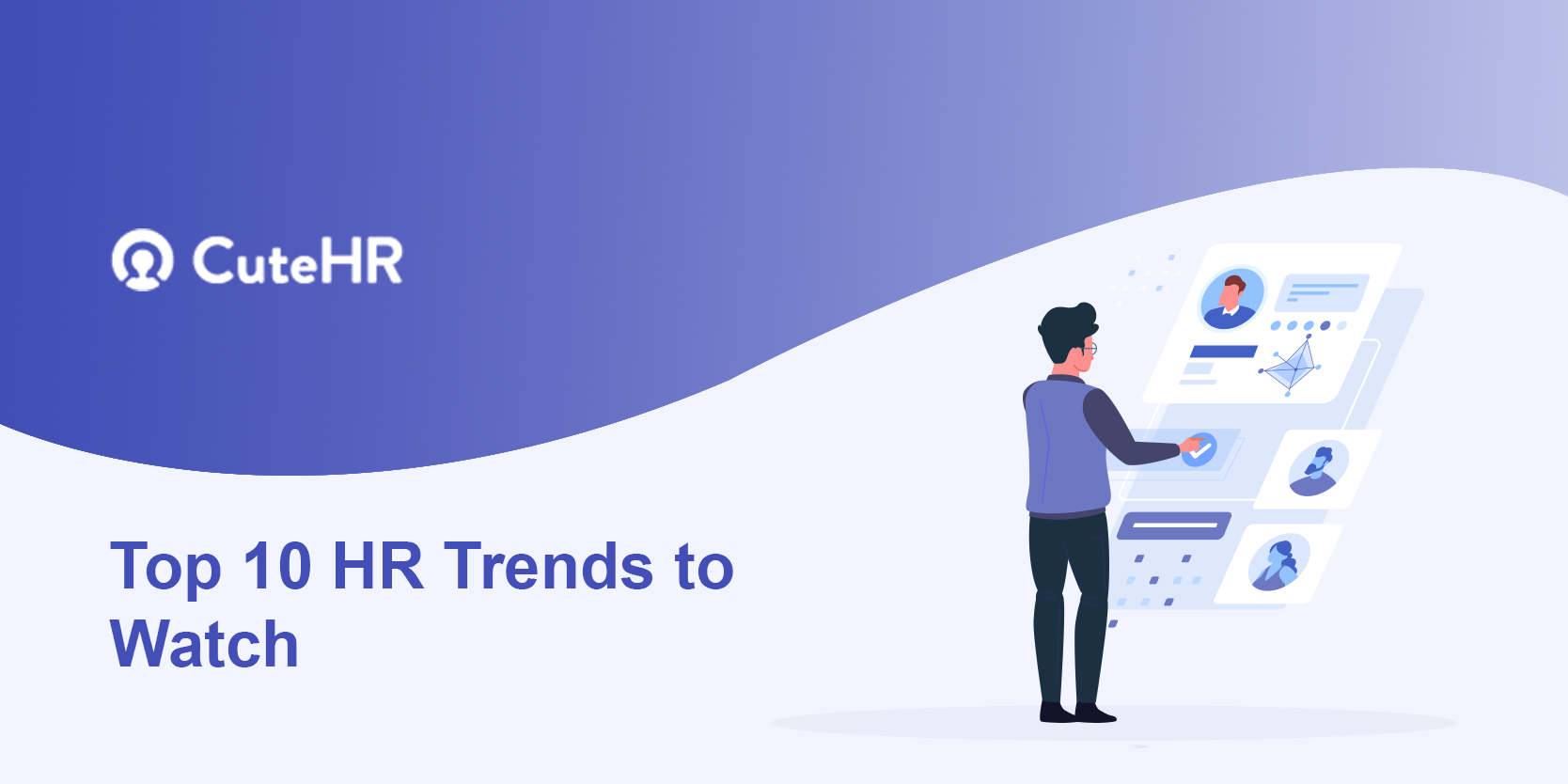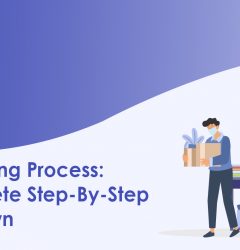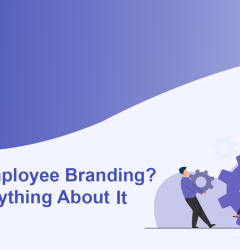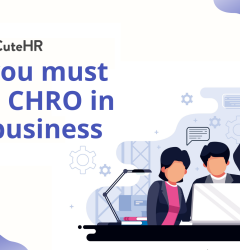13 Jul

In a rapidly evolving and dynamic business space, Human Resources as a function is undergoing a paradigm shift. What worked decades ago is completely obsolete today and a constant transformation on how Human Resource is aligned with business goals is changing. You might be familiar with words like Happiness Officer, People officer to name a few. These are named redefining the new age HR nature and are indicative of the shift of Human Resource from primary personnel work to more human level strategic interventions.
When you consider the fact that millennials now make up the majority of the workforce and are defining the new age organizational culture, we realize that they are setting the benchmark of all change drivers. Millennial is reshaping our economy and how we work in it. As the next generation, Generation Z, who are used to instant access to just about anything, joins the workforce, the change drivers are further accelerating the growth even more.
Let us try and see the evolving trends in Human Resource which is changing and levelling the ground for all stakeholders.
Table of Contents
1. HR Analytics
Data is key to the human resource department and HR has been using the data for decades. But most of the data still used is unstructured and isn’t used that purposefully as aimed. HR analytics is not a new concept but is fast growing with the idea of creating HR driven business decisions. With data fueling up human resource management, some small companies don’t even prefer having an hr department up to a certain stage,
Most people use data the way drunks use the lamp posts: For Support rather than illumination
Alexis Fink, General Manager, Talent intelligence and analytics, Intel
HR Analytics primarily helps to combine and analyze data to derive useful insights and address people’s issues accordingly. It is data-driven leverage that the HR department can use to support their decision with management. This not only leads to a better working environment for employees but also eventually brings profits for the organization.
So with the right combinations of data collations, the possibilities to analyze different workplace scenarios are endless. Such workplace needs better mentors for management instead of managers to have a better Human resource structure.
For Example, an organization that is struggling with a high rate of employee turnover may not be knowing the exact reason behind the same. But by putting the right data to use, the organization can figure out the reason behind high attrition and also predict when they are most likely to leave thereby giving solutions to stop this. This can be achieved by defining relative metrics like resignation rates, and compare it with performance or appraisals etc.to identify the rationale and eventually devise a strong retention plan to retain top talent.
These are the following pointers to keep in mind while doing workforce analysis.
Determine the starting point and your organization’s analytical capability
Determine the area of analysis and the objectives you wish to achieve through workforce analysis. This is important to know the business impact that you wish to bring. Also, do an internal SWOT to know how strong the internal capability to conduct analytics is.
Evaluate the quality of the data
If the data that is going to be the benchmark of analysis is inaccurate, the result which will be derived out of this will be incorrect and hence will lead to inappropriate decisions. Evaluate the correctness of the raw data so that the implementation of suitable data metrics will furnish proper analysis. You can consider using any HR tool for effective data and performance analysis for your human resource in the organization.
Select the right tools
The Selection of right analytics tools is imperative to the success of any analytical project. While Excel is a widely popular analytical tool, new business intelligence tools like Power Bi, Tableau, CuteHR etc. are simplifying the whole process through features like real-time dashboards and advanced data processing capabilities.

Select the Right Metrics
The selection of metrics will depend upon the business case and the information you wish to derive. Don’t initiate the HR Analytics project unless you are not sure of the outcome aimed out of it.
Right Action Plan
Create the right action plan strategy post analysis and write a report that details the results of the analysis.
Review and Repeat
The success of achieving the objectives lies in consistently measuring the impact of the recommendations made through analysis and repeat the analytics process regularly to compare results.
2. Robotic Process Automation is New in HR Trends
Most value-creating initiatives in the paradigm of Human Resources are the technological advancements that are simplifying the HR processes by a great deal. RPA is one of the most talked-about HR trends in the industry.
Robotic Process Automation is a technology-driven process governed by structured inputs to interpret applications for processing a transaction, triggering responses and communicating with different digital systems.
RPA helps HR professionals to automate repetitive tasks so that they can focus on strategic initiatives. E.g. In the process of new Hire, RPA can support by updating Applicant Tracking, create a new record for employee database and gather employee information. RPA also communicates with various systems and can check compliances accordingly thereby making tasks simpler with pace.
3. Artificial Intelligence is changing HR Trends.
Artificial Intelligence is the hot Buzzword today and is rather considered by few as driving the fourth industrial revolution. AI has taken over a few critical HR interventions and helps them to stay top of the things through informed insights and decisions. Instead of absorbing in loads of paperwork AI supports HR operations run more smoothly.
For Example,
- AI helps to reduce the Recruitment Timeline and speeding the candidate screening.
- AI helps to predict when to start the hiring process of certain departments and hence avoid any unfilled positions during critical business periods.
However, it is essential to recognize that Analytics and Automation are different from Artificial Intelligence and should not be confused as similar. A true AI process is something beyond coding and is more predictive. Hence, AI applications are quite expensive and are not widely used as yet. But with technology Advancement, much simpler and widely available AI resources will soon become part of our lives.
Apart from the technology advancements, what we see today is that the whole perception around work is profoundly changing. What matters most today is the result of the level of employee engagement and involvement at the individual and organization level. Employeesensures employee retention who are capable of driving change within the organization is truly indispensable and a lot of focus in nurturing such Millennials is required today.
Millennials today are on the rise and are the people behind the organizational transformation. They are the people behind the fresh ideas and value digitalization in all forms. As compared to their previous counterparts, Millenials focus on aspects of work-life balance with opportunities to grow their potential within the organization. Their key aspects of attention include Flexibility at work such a remote work, Flexi hours. Opportunities for Collaboration and regular Feedback mechanism.
The new HR trends are shifting towards a more people-centred approach. Here in the next headlines, we will see a few examples and trends on how future organizations are preparing themselves to be structured.
4. Holacracy
This is a new era structuring approach that defines that power doesn’t flow top-down but is rather equally distributed within the organization. This gives employees the chance to self-manage themselves rather than being done as a directed system. There is a structured set of rules that grants this functional approach and enables to eliminate uneven power dynamics.
5. Gig Economy
The economy is trending towards a labour centric market and freelancing or contractual labour is in high demand. It is a win-win situation for both the employee and the employer. The employer saves additional logistic costs. And employee gets empowered with greater flexibility. They get the freedom to choose the jobs they wish to do as per their interest.
Gig economy culture provides some lifestyle benefits as against traditional work structures.
6. Remote working
Globalization has led to a diverse workforce and working as a contractual employee is setting the precedence today. Remote working and coordinating with teams sitting at far off locations is defining the new age paradigm shift in the modern economy. Employees are based at times in different time zones and working on a single project making the whole process truly diverse in approach.
7. HR Chatbots
Chatbots are already being used in IT support. By 2022, we will see a greater amalgamation of HR chatbots to aid employees with their different queries. The only challenge is to have FAQ’s designed for Chatbots answering HR specific queries.
8. Reskilling Jobs
Your organization is moved by the skills that you have. The evolution of individuals in a company ultimately translates to the evolution of a company.”
Matthew Sigelman CEO of Burning Glass Technologies
Knowledge gaps provide significant obstacles in bringing results if employees are not aligned to achieve the business process. Project managers will have to work with HR departments to appraise job functions, conduct a job analysis, divide jobs into different verticals and then redistribute these jobs to either gig/contractual workers or train existing workers in new workflows.
9. Employee Experience
Traditionally Employees have always been seen as a cost rather than an important source of revenue. But they are the ones who accelerate any change in the organization and are the true ambassadors of the company’s structure and processes.
Positive Employee experience includes various phases from attracting talent, on-boarding, steering performance and development to off-boarding. Establishing a positive culture should be a top priority for the organization with multiple benefits to achieving.
A positive experience also ensures employee retention as employees don’t feel the need to switch company. Additionally, it builds an employer brand thereby attracting top talent.
10. Employee Engagement
Out of all the different phases of the employee journey with the organization, Employee Engagement is highly critical. Employees need to feel being valued and being part of larger company goals as true assets. Apart from this, it also needs to know that they are being heard.
As a result of all Employee centric initiatives, the ultimate goal is to foster employees who are just not committed to the company but are also driven to achieve business goals by building strengths and purpose.
In the end, it is not the processes and platforms that matter, it is the results. The new trends highlight achieving the best results by empowering people to measure and set their goals. Hence it is essential to foster curiosity and diversity, encourage learning and involve greater participation from the employees. Shifting to a more people-centric approach is the key no matter what industry or role.
As HR is evolving, trends will keep on changing. Some organizations have already embraced the trends, while others are still to adapt to this change, being unable to anticipate the future or lack of knowledge. Change always takes time, and every organization is structurally different. The real key to benefiting from HR trends in 2022 is not embracing any change blindfolded, but rather making a careful decision about which way to follow.

What is HR Trend?
HR Trend is the shift in the way, the human resources are changing in order to improve or automate human resource management.
What HR Should Know in 2022?
HR should understand that the changing trend should sync with their HR Strategic growth. This will help them build better HR policies and follow HR Practices.












Jyoti Kapoor